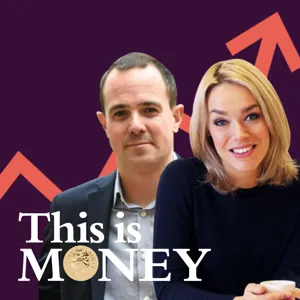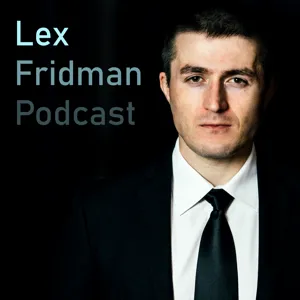Podcast Summary
Sean Ono Lennon's Fascination with Science: Musician Sean Ono Lennon, known for his scientific curiosity and feminist advocacy, connects with planetary scientist Carolyn Porco, showcasing his ongoing interest in science despite leaving his studies behind.
Sean Ono Lennon, despite not pursuing a career in science, shows a deep appreciation and fascination for various scientific fields. He has a particular interest in planetary exploration and cosmology, which led him to connect with planetary scientist and Startalk host, Carolyn Porco. Lennon's curiosity and intelligence, along with his support for feminist causes, made him an ideal guest for the show. Though he didn't complete his studies at Columbia University, he expressed a desire to learn and engage with scientific concepts, despite his distractions from his music career. His background as a child in a strict boarding school may have influenced his decision to leave scientific studies behind, but his passion for science remains evident through his Twitter activity and personal connections.
The Anthropocene: Human Impact on the Planet: The Anthropocene era underscores human influence on the planet, but it's not a guarantee of our demise. We have the power to decide our future.
The world today is facing unprecedented challenges, both politically and environmentally, leading to a growing pessimism about the future of humanity. The term Anthropocene, representing the human-caused extinction epoch, highlights the significant impact humans have on the planet. While it doesn't mean we're doomed, it does signify that we're on the precipice of bringing about our own demise. The environmental changes we're experiencing could lead to geopolitical instability. The optimism of the past about a futuristic society has been replaced by a sense of acceptance and concern about our ability to survive. However, it's important to remember that the Anthropocene doesn't mean it's a foregone conclusion – it's up to us to decide our future.
Navigating the complexities of future work and the environment: Recognize potential consequences of technological advancements and environmental changes, find ways to mitigate negative impacts, and consider the potential for a widening wealth gap.
The future of work and the environment present significant challenges. While automation and robotics may lead to job displacement and potential poverty, climate change poses its own set of problems. The speaker shares an anecdote about a woman at the airport who seemed happy to use a robotic kiosk, despite it replacing her job. This raises questions about the potential for a widening wealth gap. At the same time, the speaker discusses the addition of leap seconds to the calendar and how it's not related to the perception of seasons or climate change. Overall, the conversation highlights the complexities of these issues and the need for thoughtful consideration as we navigate the future. It's important to recognize the potential consequences of technological advancements and environmental changes, and find ways to mitigate their negative impacts. The speaker recommends the book "Learning to Die in the Anthropocene" as a thought-provoking read on this topic.
The connection between music, art, and mathematics: Music, art, and mathematics have long been interconnected through shared principles, such as the organization of the musical scale and the belief in celestial harmony based on mathematical ratios.
There are intriguing connections between music, art, and mathematics. The organization of the musical scale, with each month corresponding to a note on a piano keyboard, highlights this intersection. This concept can be traced back to ancient times, when figures like Pythagoras believed in the "music of the spheres," which posited a celestial harmony based on mathematical ratios. Moreover, the idea that "music is the mathematics of sense and math is the music of reason," as expressed by Oxford scientist James Sylvester, underscores the profound relationship between these seemingly disparate domains. While the exact separation of science and art is debated, it's clear that throughout history, there have been many figures who excelled in both areas. As for the question about Saturn's core, it remains a topic of ongoing research, with theories ranging from dense, non-molten materials to ordinary rocky substance.
Exploring the interconnectedness of life and the universe: Through recognizing the complex systems of nature and working towards sustainable solutions, we can advance genetically while respecting the planet and other forms of life.
Despite our destructive tendencies towards the planet and other forms of life, there is potential for optimism and sustainability. The universe, from its core to its outer layers, is full of complex and interconnected systems, much like Earth and its inhabitants. Sean Lennon and Carolyn Porco discussed the challenges we face as a species, including climate change and grave inequities, but also highlighted the importance of shifting our perspective and finding examples of symbiotic relationships in nature. While the idea of colonizing Mars may seem daunting, the potential for sustainable systems and learning from natural resources exists. Ultimately, the key is to recognize the interconnectedness of all life and work towards a future where we advance genetically while respecting and preserving the world around us.
Exploring Mars and colonizing it are two different things: Focusing on scientific research stations and DNA seeding on other planets is more realistic than colonizing them with billions of people, while considering our moral obligation to spread Earthbound DNA if we face extinction.
While human exploration of Mars and other planets is important for scientific discovery and inspiration, the idea of colonizing these planets with billions of people is not a realistic or achievable goal in the near future. Instead, setting up scientific research stations and focusing on seeding other planets with Earthbound DNA could be more realistic and aligned with our survival instincts. The discussion also touched upon the idea that we may not be good custodians of our own planet, and the question of whether we have a moral obligation to spread Earthbound DNA to other exoplanets if we face extinction. Overall, the conversation emphasized the importance of scientific exploration, but also the need to be realistic about our capabilities and the potential consequences of our actions.
The Pros and Cons of Social Media for Intellectual Discourse: Social media offers access to diverse perspectives but requires users to practice critical thinking and respectful communication to avoid unproductive arguments and misinformation.
Social media platforms like Twitter have their pros and cons. On the positive side, they provide access to a vast amount of collective knowledge and wisdom that can stimulate meaningful discussions. However, they also expose users to misinformation and people with poor critical thinking skills who can engage in unproductive arguments. The beauty of Twitter lies in the diversity of perspectives it offers, but the ugliness comes from the lack of critical thought and civility displayed by some users. Ultimately, while social media can be a valuable tool for learning and engaging in intellectual discourse, it requires users to be trained in critical thinking and respectful communication to make the most of it.
The Importance of Human Interaction Skills and Artistic Integrity in the Digital Age: Children need to learn human interaction skills beyond social media, and artistic integrity adds value to scientific presentations
While social media skills are valuable in today's digital age, there's a growing concern that children are neglecting essential human interaction skills. According to one speaker, social media is a 2-dimensional representation of oneself, but it's crucial to learn how to connect with people in real life. They believe there should be more training in empathy and human interaction as we continue to evolve in the digital world. Another topic discussed was the evolution of art, with a suggestion that visual effects and animations could be considered a form of primitive inspiring art in the future. Additionally, the importance of artistic integrity in scientific presentations was emphasized, as it can increase the value of the science and engage the public.
The transformative power of music: Music can evoke deep emotions, shape identity, and feel like a calling for musicians. Despite external pressures, staying focused on the art itself is essential.
Music has the power to evoke deep emotions and even shape one's identity. The speaker shared her personal experience of feeling connected to her late father through his music and eventually pursuing a music career due to its profound impact on her. She also emphasized that being a musician can feel like a calling, and the public's perception or expectations can add pressure but should not deter focus on the art itself. The speaker's story underscores the transformative power of music and the personal journeys that musicians embark on to share their art with the world.
Art and Science's Unexpected Intersection: Art influences people and inspires scientists, while science benefits from artistic visualizations. The connection between art and science broadens our perspectives.
Art and science intersect in unexpected ways, inspiring each other to push boundaries. The speaker shared a personal anecdote of overhearing two girls discussing their admiration for Sean Lennon, highlighting how art can influence people. Regarding the connection between art and science, the speaker explained how music, as a form of art, is mathematically structured, making it appealing to mathematically-minded individuals. In turn, scientists benefit from the artistic visualizations of complex phenomena, such as space art. The speaker's appreciation for space art led him to create a special section on his website for space artists. He also shared an exciting discovery about the rings of Saturn, which are surprisingly thin but contain massive waves of rubble that extend miles high, caused by the resonance with nearby moons. This interplay between art and science demonstrates how each field can inspire the other and broaden our perspectives.
Exploring the Intersection of Science and Art: The boundary between science and art is blurred as both fields stem from human curiosity and desire to understand the world, with technology bridging the gap and enhancing artistic expression.
The boundary between science and art is not clear-cut. Both fields stem from the human mind's deep connection with the natural world and our desire to explore and understand it. The artist Indivamchi, for instance, was able to merge science and art in his imagination, envisioning a dangerous yet beautiful journey through space. Virtual reality and augmented reality are already influencing art and architecture, while social media can spread both information and misinformation. The discovery of an advanced alien civilization would have profound social and religious implications, but it's unlikely to confirm all religions or make people run for cover. Technology, including virtual tools, can enhance artistic expression without being considered cheating. Ultimately, the fusion of science and art reflects the human spirit's insatiable curiosity and quest for knowledge and beauty.
Behind every technological marvel is a human mind: Technological innovations are brought to life by the creativity and ingenuity of human minds, not just machines or AI.
Even the most advanced AI and technology, like the DeepDream bot, are still created and programmed by humans. While we may interact with these creations online, the artists and innovators behind them are real people with Twitter handles and music records. For instance, Chuck Nice is on Twitter as @ChuckNiceComic, Carolyn Porco is @CarolynPorco, and Sean Lennon can be found at @seanonolennon. Musically, listeners can check out Carolyn's record company at kimiramusic.com and catch her band Claypool and Delirium in October. Remember, behind every technological marvel is a human mind at work.






